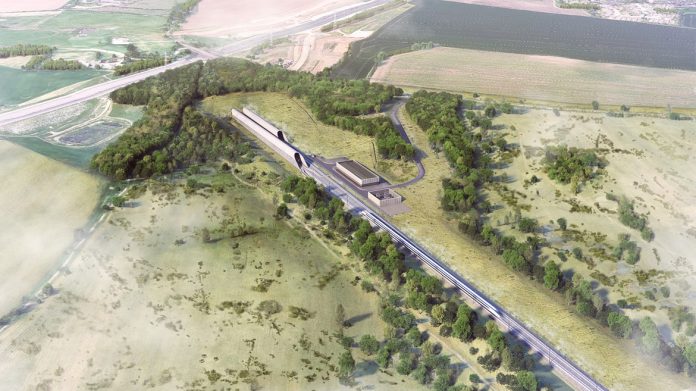HS2 has unveiled plans to create one of the largest areas of chalk grassland on the edge of the Chilterns in the Colne Valley
The scheme, designed by HS2’s landscape architects, ecologists, engineers and soil specialists, aims to reuse construction materials to create 127-hectares of new chalk grassland, woodland, wood pasture and wetland habitats that will substantially enhance the local natural environment.
The Colne Valley Western Slopes project will be a major contributor in meeting HS2’s carbon reduction targets by delivering significant ecological gain in the Colne Valley.
It will also reduce the carbon footprint of the project by decreasing road haulage and waste treatment activities and will enable habitats to sequester carbon by replacing arable land with natural habitats.
Plant species and habitats are being carefully selected to be resilient to a changing climate. Almost 65,000 trees and shrubs of 32 species will be planted together with nearly 3.5km of new hedgerows.
Around 90-hectares of calcareous grasslands which once thrived on the valley slopes will be established and areas of historic woodland reinstated.
The project, being designed and delivered by HS2’s civils contractor Align, aims to provide wider health and recreation benefits for neighbouring communities including the provision of new connected green spaces and around 4.5km of new footpath, cycling and horse-riding routes.
Arable land that is initially needed for a major works compound to construct the Colne Valley Viaduct and Chilterns Tunnel will be transformed through the re-use of existing soils and recycling of three million m3 of chalk taken from the tunnel excavation, as well as concrete and limestone aggregate materials used in the construction process.
Materials will be reused, rather than transported, to reduce carbon output.
‘Establishing better connected, sustainable and biodiverse landscapes’
HS2’s environment director, Peter Miller, said: “This project forms a major part of HS2’s Green Corridor programme to establish better connected, sustainable and biodiverse landscapes along the route of the new railway that will contribute substantially to HS2’s carbon reduction target.
“It demonstrates HS2’s approach to addressing many of the complex issues surrounding climate change and which are central to protecting our environment, and is a great example of how good design and planning can mitigate the effects of climate change.”
Daniel Altier, project director from Align, commented: “This innovative, multi-discipline project is designed to create a huge expanse of new grassland, connected woodland and wood pasture in the Colne Valley, helping to preserve declining or rare flora and fauna in the area, and providing a lasting legacy for biodiversity and local people.
“We are pleased to be collaborating on the design with Natural England, Hertfordshire and Middlesex Wildlife Trust, the Colne Valley Regional Park Panel, local authorities, and specialist soils experts.”
Simon Railton, landscape architecture lead from the LDA Design/Jacobs team (on behalf of Align-D), added: “Our proposals are the result of a truly collaborative endeavour which has compelling landscape and ecological objectives at its centre.
“This is a rare opportunity to establish, at scale, a distinctive and multi-layered landscape, which is inspired by and grounded in the context of the Colne Valley and Chiltern Hills.
“We aim to create a landscape which is both rich in biodiversity and a place for people to explore and connect with the natural environment. In doing this we are embracing sustainable design solutions such as green travel opportunities and reuse of construction materials to help achieve ambitious carbon reduction targets.”




![[VIDEO] HS2 completes 4,600-tonne viaduct slide across M6 The HS2 team completed a 17-hour long operation sliding the viaduct structure across the M6 without closing the motorway](https://www.pbctoday.co.uk/news/wp-content/uploads/2025/12/M6-South-viaduct-slide-taking-place-across-a-live-motorway-December-2025-218x150.jpg)









![[VIDEO]Government launches new online appeal service for local planning authorities Group of young coworkers using computers in their group office, representing the new online appeals service](https://www.pbctoday.co.uk/news/wp-content/uploads/2025/12/iStock-2191280160-218x150.jpg)